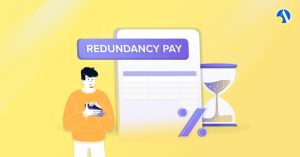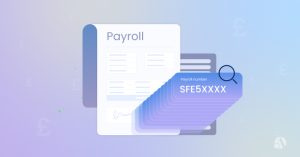What is PAYE?
PAYE, or Pay As You Earn, is HM Revenue and Customs’ (HMRC) system for collecting income tax and National Insurance contributions directly from your salary or pension before it hits your account. Think of it as a streamlined way to pay your taxes automatically from your earnings as you go. This system was introduced to simplify tax collection and is widely used by UK employers and pension providers.
- For employees, PAYE applies to your wages, bonuses, overtime, and even taxable benefits. Employers are responsible for deducting taxes and sending them to HMRC, saving you the hassle of filing extensive paperwork.
- For pensioners, private or workplace pensions are also taxed under PAYE. However, state pensions are treated differently, with tax possibly being collected through adjustments to other income.
What is PAYE Tax?
PAYE tax is simply your income tax and National Insurance contributions deducted at source. It ensures you 'pay as you earn,' spreading tax payments across the year rather than facing one lump-sum bill.
When you receive income from employment or a pension, your employer or pension provider calculates and deducts the correct amount of tax using a tax code provided by HMRC. The remaining amount is what you take home.
How is PAYE Calculated?
PAYE calculations depend on your income and tax code. Your tax code determines the personal allowance you can earn tax-free before deductions begin. For example, in 2024/25, the standard personal allowance is £12,570 per year, or £1,048 per month.
Here’s a simple breakdown:
- Personal Allowance (up to £12,570): 0% tax
- Basic Tax Rate (£12,571–£50,270): 20% tax
- Higher Tax Rate (£50,271–£125,140): 40% tax
- Additional Tax Rate (over £125,140): 45% tax
Employers also deduct National Insurance depending on earnings and add employer contributions.
Employer PAYE vs Pension PAYE
- Employer PAYE involves managing payroll for employees, including deducting taxes, pensions, and National Insurance, then submitting these to HMRC.
- Pension PAYE works similarly but is handled by the pension provider for your retirement income. Your tax depends on the combined sources of income, such as pensions and other employment, ensuring you’re taxed correctly.
What is the PAYE Tax Rate?
The PAYE tax rates are consistent with the UK's income tax bands, ranging from 20% to 45%, depending on your income level. Taxpayers also receive a personal allowance, which is income you can earn tax-free, typically £12,570 for the 2024/25 tax year.
Frequently Asked Questions
What is the PAYE Tax on a Payslip?
Your payslip will show the amount of PAYE tax deducted from your salary. It includes income tax and National Insurance deductions, ensuring that only your net earnings are paid to you. Check your payslip for your tax code to confirm accuracy.
Why is My PAYE Tax so High?
There are several reasons why your PAYE tax might feel high:
- An incorrect tax code could mean HMRC overestimates your liability.
- Receiving taxable benefits, such as a company car or health insurance.
- Additional income sources that impact your tax code. Read more about 0T Tax Code here.
If your tax still seems unusually high, contact HMRC to review your tax code.
What if I Have Other Sources of Income?
If you have multiple income sources, such as a second job, property rental, or investment income, only one source will receive the personal allowance. Other income will be taxed entirely. Keep an eye on this and file a Self-Assessment tax return if necessary.
Also, to get more information about HMRC`s latest side hustle crackdown, click here
Where is My PAYE Reference Number on My Payslip?
Your PAYE reference number is crucial for identifying you with HMRC. It can often be found at the top of your payslip, near other employer details. Alternatively, check your P45 or P60 forms for the reference.
Take a look at what a PAYE Reference number looks like here
Navigating PAYE Challenges
Encountering a PAYE discrepancy, like overpayment or underpayment, isn’t uncommon. These discrepancies often occur due to incorrect tax codes or delayed updates from HMRC. The good news? Most issues correct themselves automatically over time.
If you’ve overpaid or underpaid tax, you’ll receive a notice from HMRC, often referred to as a P800. This notice details how to claim a refund or settle any dues. For lingering issues, contact HMRC or consult an expert to resolve the matter swiftly.
Trust Debitam with Your PAYE Queries
We understand that PAYE can feel confusing, especially when discrepancies arise. With years of experience helping UK businesses streamline their payroll and tax systems, Debitam can guide you through PAYE effortlessly.
Avoid unnecessary headaches with PAYE and ensure your business payroll is running smoothly. Sign up with us today to simplify the process, manage your payroll, and focus your energy where it matters most—growing your business!













